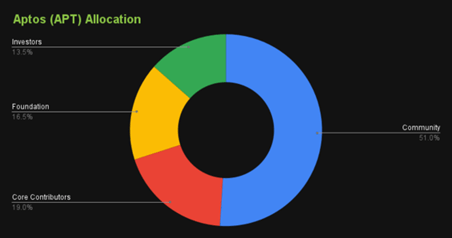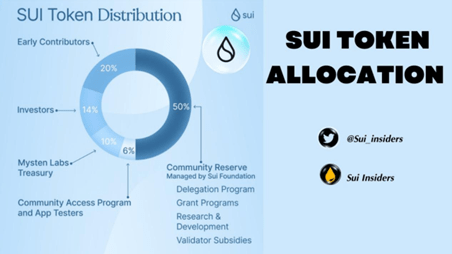Reason to trust

How Our News is Made
Strict editorial policy that focuses on accuracy, relevance, and impartiality
Ad discliamer
Morbi pretium leo et nisl aliquam mollis. Quisque arcu lorem, ultricies quis pellentesque nec, ullamcorper eu odio.
As one of the fundamental blockchain infrastructures, public chains are of paramount significance, giving rise to an area of fierce competition. In the previous crypto bull, as Ethereum users continued to embrace new platforms, the rise of Layer1 public chains such as Solana, Avalanche, and Cosmos expanded market expectations of public chain narratives. Despite that, the recurring security risks, including Solana’s downtime and the Avalanche lightning loan attack, have magnified the flaws of Solidity and Rust.
Drawing on the advantages of Solidity, Move is a programming language built on the basis of Rust, with improvements in terms of security, scalability, and flexibility. Thanks to the extensive investor recognition of Move, the new Move-based public chains have been favored by the market and capital institutions. In particular, Sui and Aptos have emerged as the most trending Move-based public chains.
Background of Sui and Aptos
On June 18, 2019, Meta (formerly Facebook) officially released the Diem (formerly Libra) white paper, aiming to build a “borderless currency”. However, under strong regulatory pressure, the project fell through. As executives left the project, the team was disbanded. Meta eventually sold Diem for $200 million.
However, the story did not end there. Former members of the Diem team, including Mo Shaikh, Avery Ching, and Evan Cheng, founded Sui and Aptos and inherited Move, the most important legacy of Diem. With the Meta background, Sui and Aptos have captured the market spotlight and are known as the twin stars of Move.
Similarities Between Sui and Aptos
01 Date of Inception
Sui and Aptos were established almost simultaneously and were both initiated in 2021.
02 Programing Language
Sui and Aptos both use Move as their native programming language, which is also known as a language born for cryptos because it was designed to code various assets and business logic that make up the financial infrastructure of Diem, which aims to become a global payment system.
03 Consensus Mechanism
Sui and Aptos are both backed by the PoS (proof-of-stake) mechanism. This means that gas fees are charged for all network operations, which are used to reward PoS participants and prevent spam and denial-of-service attacks.
04 Vision
Sui and Aptos both aim to resolve the blockchain trilemma.
05 Fundraising Status
Both Sui and Aptos have raised hundreds of millions of dollars; the financing of both projects was led by a16z, a top institution.
Differences Between Sui and Aptos
Despite the same team background, there are still many differences between Sui and Aptos. For example, although both use Move, Aptos follows the classic design approach outlined in the Diem whitepaper, while Sui has made improvements in multiple aspects, creating a unique Sui-Move language.
The advantage of Sui-Move is that it adopts an object-centric model, instead of an address-centric model, which means that most things on the blockchain, including assets, smart contracts, and NFT transactions, are represented as “objects”. When the address data is modified, sent, or received, the address-centric Aptos needs to update the data twice, while Sui only needs to update the data once, making it more secure.
Additionally, although both Sui and Aptos are PoS chains, their underlying consensus algorithms differ. Aptos achieves parallelization using Block-STM, which allows developers to engage in unrestricted coding. Moreover, this enables higher throughput and lower latency for practical use cases.
Sui uses the Narwhal and Tusk protocol, which is based on a DAG (Directed Acyclic Graph) mempool for layer parallelization. The protocol is asynchronous, so it can resist DoS attacks. This also gives Sui an edge in terms of security.
Sui and Aptos significantly differ in terms of token allocation.
The initial APT supply is capped at 1 billion, and all investors and current core contributors will have to wait a 4-year lock-up period before they can get the tokens. APT is allocated as follows:
- 51.02% allocated to the community;
- 19.00% allocated to core contributors;
- 16.50% allocated to the Aptos Foundation;
- 13.48% allocated to investors.

The total SUI supply is capped at 10 billion and is allocated as follows:
- 50% allocated to the Community Reserve managed by the Sui Foundation;
- 20% allocated to early contributors;
- 14% allocated to investors;
- 10% allocated to the Mysten Labs Treasury;
- 6% allocated to the Community Access Program and App Testers.
Unlike conventional PoS chains such as Aptos, Sui has added a storage fund to its tokenomics. As blockchains are data structures that only increase in size, the cost of on-chain data maintenance will keep growing over time. As such, compared with fees charged to early users, users who join Sui now pay higher fees, but the storage fund solves this problem by letting early adopters pay more fees so that all users can use the network based on similar fees.

Of course, for a public chain to eventually stand out, functional projects are essential. The Aptos ecosystem was launched earlier and now boasts over 140 projects, according to incomplete statistics. Although Sui started later, it has caught up with Aptos and now covers more than 200 projects.
In terms of development progress, Aptos, which completed its mainnet launch last October, is obviously in the lead, but the chain’s performance since the mainnet launch has been controversial. Advancing steadily, Sui has also launched its mainnet and is now stepping into the spotlight. Can Sui lead Move-based chains and become the next Layer1 game-changer? Let’s wait and see.



















